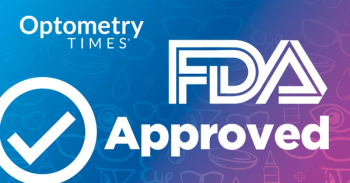
- August digital edition 2022
- Volume 14
- Issue 8
Case study: Patient presents with severe PDR history
The patient’s ocular history was significant for severe nonproliferative diabetic retinopathy (NPDR) in the right eye (OD) and mild NPDR in the left eye (OS), which had been diagnosed 4 years previously at his last eye exam.
A 53-year-old Hispanic male presented to the Veterans Affairs eye clinic for a comprehensive diabetic eye exam with a chief complaint of blurry vision without correction.
The patient’s ocular history was significant for severe nonproliferative diabetic retinopathy (NPDR) in the right eye (OD) and mild NPDR in the left eye (OS), which had been diagnosed 4 years previously at his last eye exam.
The patient had a medical history of type 2 diabetes mellitus (diagnosed approximately 10 years earlier), stage 4 chronic kidney disease, hyperlipidemia, and benign hypertension.
His systemic medications were empagliflozin, insulin, furosemide, atorvastatin, amlodipine, carvedilol, and losartan. He had been on dialysis for the past year.
He was allergic to lisinopril and had never used any tobacco products. His most recent hemoglobin A1c was 9.3% (compared to 12.3% 3 months prior), and his blood glucose ranged from a high of 349 mg/dL to a low of 197 mg/dL (Table 1).
The best correct visual acuities (BCVA) on examination were 20/200 OD, 20/40 OS.
In contrast, BCVA at his last eye exam had been 20/25 OD, OS. Pupils were equal, round, and reactive to light, with no signs of a relative afferent pupillary defect.
Extraocular motilities were unrestricted, and confrontation visual fields were full OD, OS. Intraocular pressures (IOP) with Goldmann applanation tonometry were 18 mm Hg OD, OS.
Anterior segment of the eyes revealed iris neovascularization (NVI) near the pupillary border in OU.
Dilated fundus examination revealed 1+ nuclear sclerosis, 1+ anterior cortical spoking, and 2+ posterior capsular cataracts OU.
The optic nerves were 0.40 round with healthy rim tissue OD, OS, without neovascularization of the disc (NVD).
Clinically significant macular edema (CSME), exudates, microaneurysms, and dot/blot intraretinal hemorrhages were noted within the macula OU.
Neovascularization elsewhere (NVE), exudates, microaneurysms, dot-blot hemorrhages, and cotton wools spots were scattered within all 4 quadrants of the posterior pole (Figure 1).
Spectral domain optical coherence tomography (SD-OCT) of the macula showed scattered exudates and diffuse areas of intraretinal (IRF) and subretinal fluid (SRF) OD, and a large central area of SRF, diffuse SRF and IRF inferior and superior to the fovea with multiple intraretinal hemorrhages (IRH) and exudates OS (Figure 2).
The patient was diagnosed with PDR and CSME OU. His blood pressure was 170/94 right arm sitting in office (Table 2).
These findings were discussed with a retina specialist, and the patient was administered Eylea (aflibercept, Regeneron) intravitreal injections OU on the same day.
Follow-up visits
The patient returned every 4 weeks for aflibercept injections with PRP OD performed within the first month (as of 2/2022, the patient is still receiving injections).
At his most recent follow-up, BCVA was 20/50-1 OD, 20/150 OS, and both the NVI and NVE had regressed.
The macular edema improved, as shown in the SD-OCT macula images (Figures 1-3). PRP was to be performed at a future visit OS.
Articles in this issue
about 3 years ago
Comanaging tears in Descemet membrane during cataract surgeryabout 3 years ago
Dry eye and flares: make education a priorityabout 3 years ago
It’s not your grandparents’ anti-VEGF therapyabout 3 years ago
Making the case for greater health care literacyabout 3 years ago
Can cyclosporine solutions be used to treat allergic conjunctivitis?Newsletter
Want more insights like this? Subscribe to Optometry Times and get clinical pearls and practice tips delivered straight to your inbox.



















































.png)


